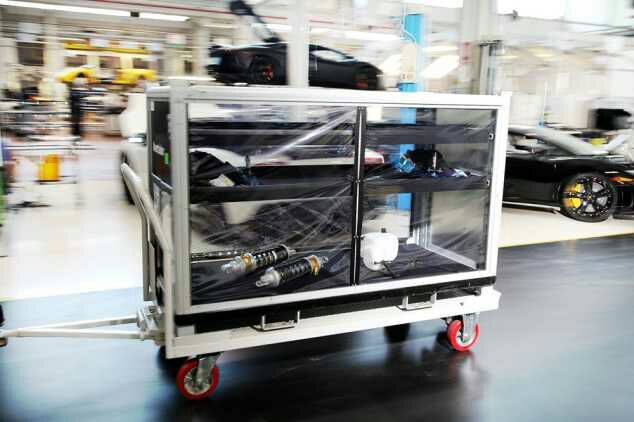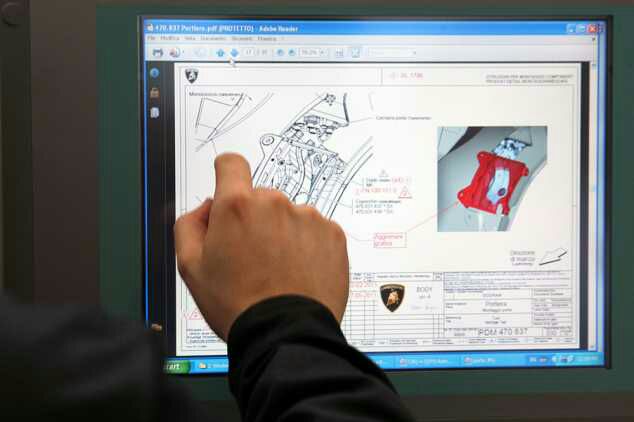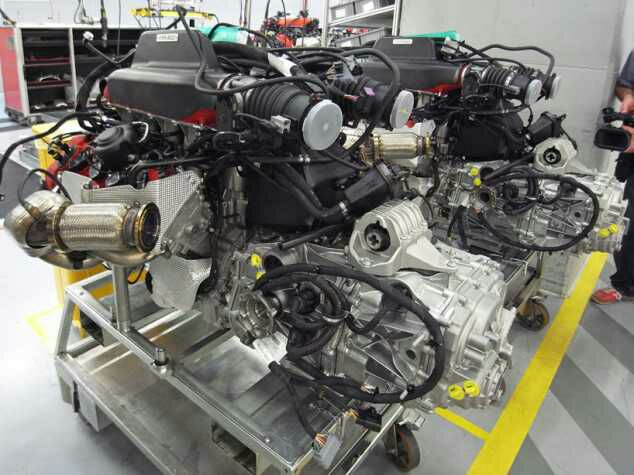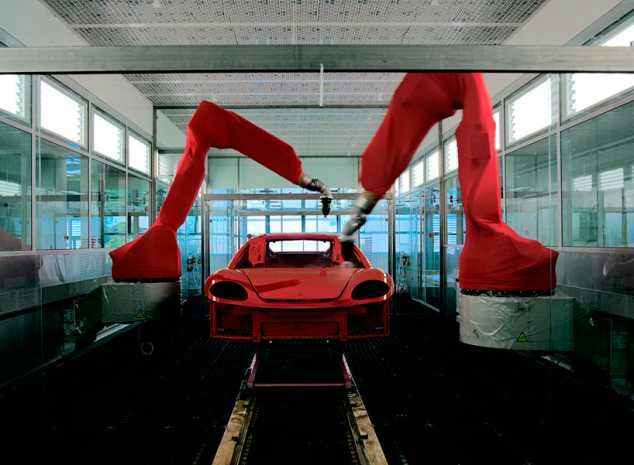The ‘New assembly line’ at the ferrari factory in maranello, italy founded in 1929 as a racecar sponsor and manufacturer, Ferrari has been producing hand-finished road vehicles since 1947. The ferrari factory was designed by french architect jean nouvel and modernized beginning in 1997 by company President Luca di montezemolo. All ferraris in the world continue to be produced exclusively on the maranello campus, where every ferrari is produced custom to order, and all installations are performed by hand. As a result, the company produces approximately 10 to 12 cars a day. Designboom visited the ferrari factories and is excited to bring you a three-part behind-the-scenes look at the vehicles’ production. We start in this article near the end of the process, at the ‘New assembly line’ building, bringing you later this week a visual tour of the engine manufacturing facilities and a look at the ferrari design process.
- A factory worker assembles a Gallardo Spyder.
- An Aventador rolls down the assembly line, its body clad in a protective plastic shells in order to avoid paint scuffs.
- A suspension assembly is put together by hand; Lamborghini relies on few robots at their factory.
- Suspension components are pulled by trolley to assembly stations for installation into an Aventador.
- Computers along the assembly line offer exploded views of parts, to illustrate how components should be properly fitted together.
- Assembly line.Lamborghini Aventador LP700-4s roll down the assembly line, their bodies clad in protective plastic sleeves in order to prevent accidental scratching. The car spends about two hours at each assembly station.
- Installing a rear grille, which aids in venting heat from the engine, on an Aventador.
- Lamborghini Aventador LP700-4 nears the final inspection stage.
- The wheel well of a matte-black Aventador is scrutinized by a worker as part of the final inspection process.
- Everything is wrapped in protective tissue and plastic before the test drive. The last thing the driver wants to do is mar someone's new toy before it even leaves the factory.
- Every Lamborghini is subjected to a road test at the hands of a professional driver.
- The finished product, out in the wild.
McLaren.
- In the picture you can see the production line. It starts with the carbon tub, parts are added, then the cars go into paint before final assembly and testing which can be seen on the left in the picture above. The car is built in stages and each stage takes 45 minutes and there is a green button which must be pressed before the car is released and moved onto the next stage.
- Frame and painted hull and protective plastic wrap prior to the Lamborghini factory.
- Closer view of a body being moved along the track.
- This machines permit technicians to control the height and rotation of the vehicle, permitting even the undersides to be worked on with ease.
- Comau robots hoist, hold, and rotate the vehicles along the two-story production line.
- View looking up at raised cars along the production line.
- Although the engine manufacturing process involves the use of robots for production, all testing, final assembly, and installation is done by hand.
- A separate building houses the fully automated painting and finishing centers, where the bodies are completed before arrival at the assembly center.
- The Aventador's carbon fiber monocoque roof section is mated to the passenger compartment tub.
- Each Lamborghini engine is bench-tested before it's installed into a vehicle and dynamometer tested, as seen here. The dyno checks braking systems, stability control, and brakes at simulatedwheel speeds up to 90 mph.
- The screen is located at a workshop to keep track of time vehicles are processed, thereby helping workers manage time more effectively.The process of assembling complete a Lamborghini Aventador takes about 90 minutes and over 12 different workshops. Meanwhile, a 40-minute Huracan and just over 23 workshops are finished. Each car is assembled on a separate line. At each workshop will have monitors to track the vehicle’s handling time, thereby, help workers manage time more effectively































Trending
Most Terrifying Creatures/Characters In The History Of Movies